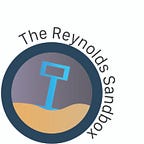Nevada voters and its “pink tax” — should feminine hygiene products become cheaper?
This November, Nevada voters will have to answer yes or no on six ballot questions. As Lucia Starbuck and Charis Nixon report, a Yes on Nevada’s Ballot Question Two would make feminine hygiene products exempt from sales tax.
Costs Which Add Up
University of Nevada, Reno, student Carla Suggs, says a tax exemption for feminine hygiene products would ease some of the burden of buying these products every month.
According to recent studies, on average, menstrual cycles occur once a month for three to six days. The average person who menstruates starts from the age of 13 and stops at age 51. This is 2,280 total days of menstruation throughout one’s lifetime, which adds up to a little over six years total. These costs can add up.
People who get periods spend about 120 dollars a year on pads and tampons, which adds up to a total of 5,600 dollars spent in a lifetime. This is according to Modibodi, a brand and blog that sells stain resistant underwear.
Divided Opinions
As someone who does not need to purchase feminine hygiene products, Bailey MeCey, a senior journalism student at UNR, was surprised that there is a tax on feminine hygiene products to begin with.
“It seems like something that’s necessary to live,” he said “…There’s no tax on bread.”
However, there are others who don’t believe these products should be exempt from sales tax. 25-year-old Nevada voter Gus Johnson is part of this group.
“I don’t believe there should be any exemption for taxation on what are strictly consumer products. It’s not a life-saving item,” Johnson said.
On the Subreddit, r/Reno, community members voiced their concerns and arguments on why they will be voting no.
User “pteam-pterodactyl” said, “It would only save the average woman $6 dollars per year but cost the state millions. I don’t support structuring our sales tax based on which gender uses a product.”
The Las Vegas Review Journal states that if Question number 2 gets approved, Nevada would lose approximately 900,000 to 1.3 million dollars in sales tax revenue per year.
This election, Nevadans will have the chance to vote Yes or No on Ballot Question Two. If the measure passes, it won’t be until January 1st, 2019 that the “pink tax” will disappear.
